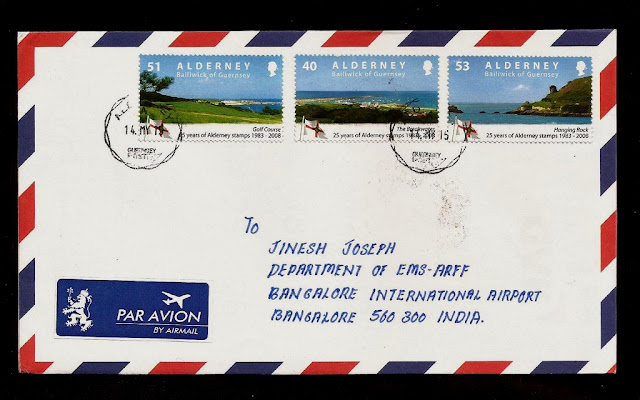Alderney (French: Aurigny
, Auregnais: Aoeur'gny) is the northernmost of the inhabited Channel Islands. It is part of the Bailiwick of Guernsey, a
British Crown dependency. It is 3
miles (5 km) long and 1 1⁄2 miles (2.4 km) wide. The area
is 3 square miles (8 km2), making it the third-largest island
of the Channel Islands, and the second largest in the Bailiwick. It is around
10 miles (15 km) from the west of La Hague on the Cotentin Peninsula, Normandy, in France, 20 miles (30 km) from the north-east
of Guernsey and 60 miles (100 km) from the south coast of Great Britain.
It is the closest of the Channel Islands to France and to the United Kingdom.
It is separated from Cap de la Hague by the dangerous Alderney Race (French: Raz Blanchard). As of 2018, the island
had a population of 2,039; natives are traditionally nicknamed vaques after the
cows, or else lapins after the many rabbits seen in the island. Formally, they are known as
Ridunians, from the Latin Riduna.
The main town, St Anne, historically
known as La Ville ("The Town"), is often referred to as "St
Anne's" by visitors and incomers, but rarely by locals (who, in normal
conversation, still most frequently refer to the area centred on Victoria
Street simply as "Town"). There is a primary school, a secondary school,
a post office, and hotels, as well as restaurants, banks and shops. Other
settlements include Braye, Crabby, Longis, Mannez, La Banque, and Newtown.
Alderney and its
surrounding islets support a rich flora and fauna. Trees are rather scarce, as
many were cut down in the 17th century to fuel the lighthouses on Alderney and
the Casquets. Those trees that remain include cabbage trees, due
to the mild climate – often miscalled "palms" but of the asparagus family), and there are some small woods dotted about
the island. Puffins on Burhou and gannets on Les Étacs (popularly called Gannet Rock) just off
Alderney are a favourite of many visitors to the island. The language of the
island is now English with a few minor variants, forming Channel Island English. For
centuries the island had its own dialect of the Norman language called Auregnais, now extinct. It was primarily a spoken language,
with only a few known poems and written works using it.
Alderney forms part of the Bailiwick of Guernsey and
since 1969 when Royal Mail relinquished authority to Guernsey Post has relied on postal services provided by Guernsey. In 1983 Guernsey Post issued its first stamps
designated Alderney. Alderney is the second largest island in
the Bailiwick of Guernsey. Guernsey Post has issued postage stamps since its creation in 1969 when the postal
service was separated from the Royal Mail. In 1983 Guernsey issued its first stamps
designated Alderney, for use from Alderney, although they are valid for use
from any island in the Bailiwick of Guernsey.

The cover posted from St.Anne on May 14,2015 and I received on May 26, 2015. The affixed stamps has a special about the first issues and its Silver Jubilee issues. The first two stamps are from the series of First Alderney stamps and the last one is the same picture of the second stamp , commemorate the 25th anniversary of the First issue of Alderney stamps.
These stamps are the remaining 3 from the same set related to the 25th anniversary of First Alderney stamps.



No comments:
Post a Comment
Note: only a member of this blog may post a comment.